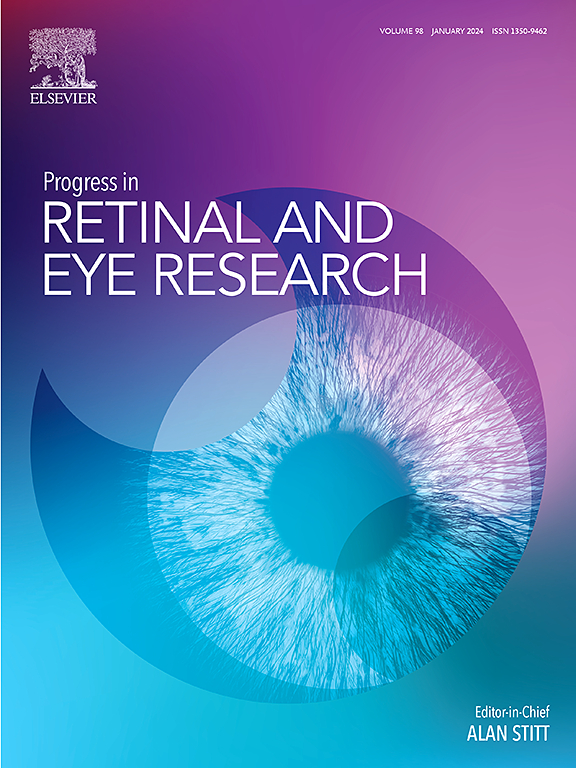Phenotyping and genotyping FEVR: Molecular genetics, clinical and imaging features, and therapeutics
IF 14.7
1区 医学
Q1 OPHTHALMOLOGY
引用次数: 0
Abstract
Familial exudative vitreoretinopathy (FEVR) is a genetically complex retinal vascular disorder, often manifesting in infancy or early childhood, and characterized by peripheral retinal avascularity, neovascularization, and retinal detachment. The disease, predominantly inherited in an autosomal dominant manner, is associated with mutations in genes such as LRP5, FZD4, and TSPAN12, which disrupt the Wnt/β-catenin and Norrin signaling pathways, critical for retinal vascular development. FEVR's clinical spectrum ranges from asymptomatic cases to severe vision loss, making early diagnosis and intervention essential for preserving sight. Management strategies include laser photocoagulation, anti-VEGF therapy, and surgery, tailored to disease stage and patient age. The future of FEVR treatment lies in predictive genetics, early screening, and proactive therapy. Ongoing research into the molecular mechanisms of FEVR offers the potential for transforming this progressive disease into a preventable one, improving outcomes for affected individuals.
表型分型和基因分型:分子遗传学,临床和影像学特征,和治疗。
家族性渗出性玻璃体视网膜病变(FEVR)是一种遗传性复杂的视网膜血管疾病,通常表现在婴儿期或幼儿期,以视网膜周围无血管、新生血管和视网膜脱离为特征。这种疾病主要以常染色体显性方式遗传,与LRP5、FZD4和TSPAN12等基因突变有关,这些基因突变会破坏Wnt/β-连环蛋白和Norrin信号通路,这对视网膜血管的发育至关重要。出血热的临床范围从无症状病例到严重视力丧失,因此早期诊断和干预对保护视力至关重要。治疗策略包括激光光凝、抗vegf治疗和手术,根据疾病分期和患者年龄量身定制。发热出血热治疗的未来在于预测遗传学、早期筛查和积极治疗。正在进行的对出血热分子机制的研究提供了将这种进行性疾病转化为可预防疾病的潜力,改善受影响个体的预后。
本文章由计算机程序翻译,如有差异,请以英文原文为准。
求助全文
约1分钟内获得全文
求助全文
来源期刊
CiteScore
34.10
自引率
5.10%
发文量
78
期刊介绍:
Progress in Retinal and Eye Research is a Reviews-only journal. By invitation, leading experts write on basic and clinical aspects of the eye in a style appealing to molecular biologists, neuroscientists and physiologists, as well as to vision researchers and ophthalmologists.
The journal covers all aspects of eye research, including topics pertaining to the retina and pigment epithelial layer, cornea, tears, lacrimal glands, aqueous humour, iris, ciliary body, trabeculum, lens, vitreous humour and diseases such as dry-eye, inflammation, keratoconus, corneal dystrophy, glaucoma and cataract.

 求助内容:
求助内容: 应助结果提醒方式:
应助结果提醒方式:


